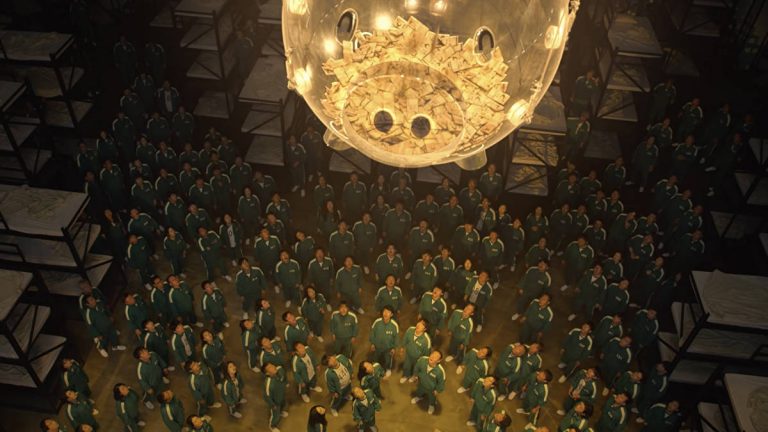We made no secret of the fact that weren’t especially big fans of Justice League when it first came out in 2017. The same could be said for Batman V Superman, which while a more divisive film for us at High on Films, was generally also regarded poorly among the superhero pack. That said, as contentious as we could find Batman V Superman to be, we can all agree that it was much more coherent than Justice League, at least in its director’s cut form.
Justice League was the exact opposite of coherent, a patchwork of two different directors with two very different styles. Snyder, going for more of a grand-scale operatic and even over-indulgent scope formed the basis. It’s a basis that required consistency, where lapses outside of this norm would instantly pull viewers out of the experience. When Joss Whedon came in, ignoring the work already put down by Snyder seemed to be his modus operandi, though was also allegedly the fault of studio interference as reported by Vanity Fair.
We all know the result, a movie that seems caught between two worlds, falling short in both. Justice League, while still making $657 million off a $300 million budget, was a success, though at the cost of wasted potential. Fans knew this, Snyder knew this, and so the film’s first director leveraged fan interest to tease his version. The “Snyder Cut”, as it became known, acted as a mysterious and nebulous ‘real’ attempt.
It was the film done right, if only it could see the light of day. Then something amazing happened, something unprecedented in the world of mainstream big-budget movies. The Snyder Cut became a reality. Through a combination of fan attention and Snyder’s hard work, an enormous amount of new money was thrown at the already complete project. With at least a new $30 million under its belt, reshoots began, the film was sent back to editing, and an unprecedented avenue in film was opened.
https://www.youtube.com/watch?v=0QmSF7WUyN0
Implications of the Revisit
Completed films are cultural artefacts. They reflect the realities of their time, for good or bad, and this makes their existence as a consolidated product that much more important. They’re a time-capsule, and reopening the time-capsule can undercut what made them special. Han shot first, in other words, and post hoc changing the script, in the limited forms this has taken so far, tends not to go down very well.
The exception to this rule comes from the already existing world of director’s cuts. In some movies, like 2005’s Kingdom of Heaven, these changes are credited as a saving grace, raising a project from mediocre to great. However, nothing has ever come close to what the Justice League is attempting, and this development might be letting the cat out of the bag.
With free-reign to revisit and rewrite, there’s no telling how far some studios could go to reinvent existing releases. A failure could turn into a success, an entirely new future direction could be found, with all missteps walked back. Where and how this idea could be implemented, that’s a more difficult question.
For one thing, people who paid full-price for a movie only to come away disappointed might not value having to pull full-price again. Justice League directly, with it coming to HBO Max as covered by The Verge, there is a risk of viewers feeling taken advantage of. In terms of movie-makers, the question could relate to where exactly the line should be drawn.
One of the most commonly spouted rumours related to this revolves around the new Star Wars trilogy. Despite starting strong, the movies had no overarching direction, and unlike the original three films, didn’t have the timeless charm to carry them through. Sure, they were all enormously financially successful and we enjoyed them a lot, but in terms of storytelling and sticking to the canon, many fans felt jilted. While we’d regard rumours of the non-canonisation of the latest trilogy as just that, what happened to Justice League does make us wonder could have taken place if the new Star War’s bombed, given the current environment.
An Existing Stage
Though new in this level of film, rereleases in other forms of entertainment media can be quite common. Generally, these try to capture the lightning of nostalgia while updating to a new audience and year, but there are exceptions to this rule.
Perhaps the most direct example of this idea in action could be found in straight remakes. Though not necessarily undercutting the point of the original films nor seeking to remove them from existence, remakes are a product that does attempt to update older sensibilities into a more relevant modern context. If successful, like with Ocean’s Eleven, audiences can love and appreciate a property like never before. If a failure, like 1998’s Psycho, peoples are left scratching their heads, but at least happy they still have the original.
In interactive digital media, unreleases and rereleases are commonly seen due to constantly changing system concerns. Take the range of live casino games from Betway as an example where titles like real roulette and baccarat can occasionally disappear and reappear from pages, but this is not due to performance or lack of appreciation. Rather, the changing backing systems like Flash’s death can affect their infrastructure, necessitating greater changes. Outside of casino games, video games take a more contentious route, with full unreleases being given to technical failures as illustrated by the likes of Arkham Knight on PC and Cyberpunk 2077 on last-gen consoles as shown by Kotaku.
Looking forward to the March 18 release date of the Snyder Cut, it’s still far too early to make predictions about what comes next. Ultimately, the question of the greater effect the movie could have on the industry could come down to how well the recut performs.
If it fails, such a costly and visible mistake could scare other companies off. If it manages to salvage the name of a poorly regard film, however, the floodgates could be opened. Even if you aren’t a fan of Snyder’s work or superhero movies in general, this new recut concept is too important to ignore. It’s something to watch, even if you don’t want to watch the movie itself.






